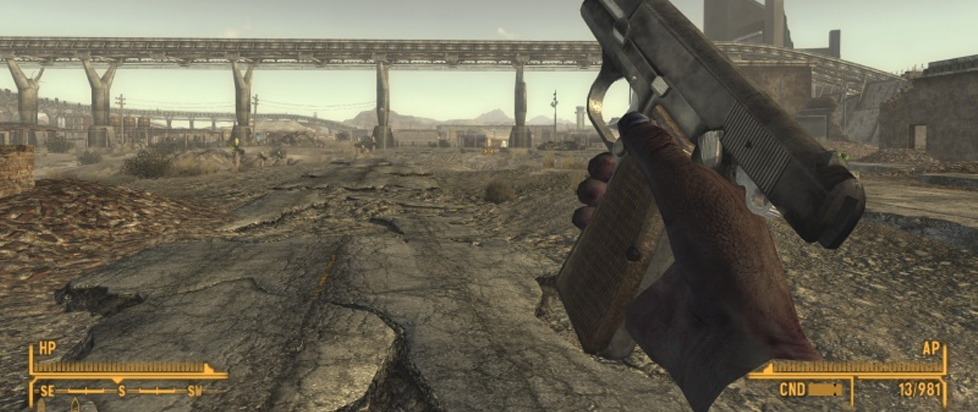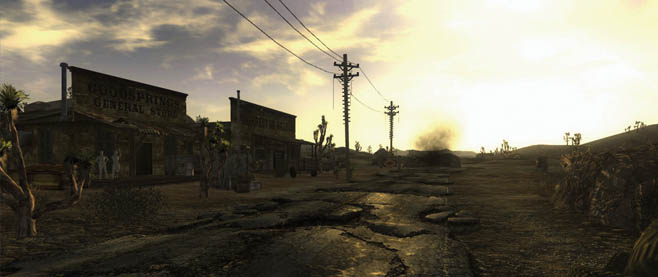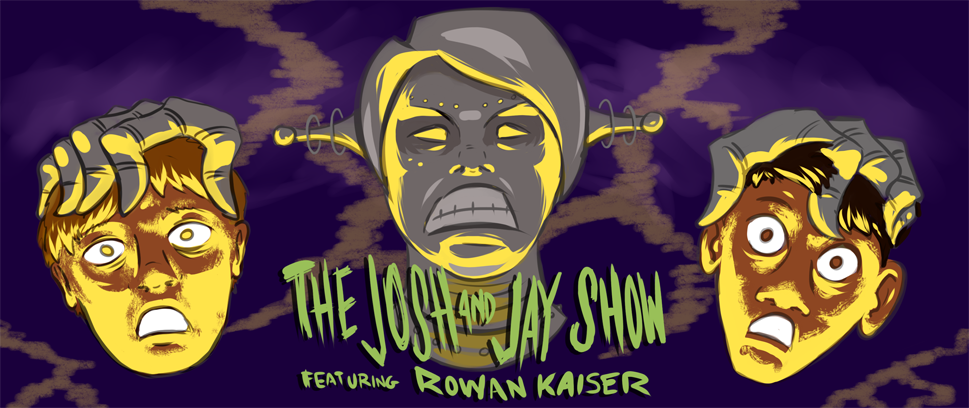
Weapon Degradation – Or Ephemeral Equipment?
Weapon degradation is a controversial mechanic. It’s often described as punishing, as busywork, and as paradoxically disincentivizing the use of your weapons in typically combat-centric games. Despite what you might expect from a column about friction, I’m not interested in countering those arguments, but in what they set up.
In RPGs like Fallout: New Vegas and The Witcher 3, the condition of my equipment was a reason to toss one [steel sword looted from a soldier] for a [10mm handgun looted from a raider] in slightly better condition. In large inventories full of identical equipment with granularly different condition percentages, loot feels disposable, and it’s easy for me to consider those systems as interchangeable across the two games. Fallout’s narrative incentive to scavenge and The Witcher 3′s grapple with the mercenary realities of witcher-ing get lost in a layer of simulation that’s simply dull.
The same criticisms are often applied to The Legend of Zelda: Breath of the Wild. It has what is easily identified as a weapon degradation mechanic – that weapons shatter after a small number of hits – but it doesn’t ‘feel’ the same at all.
Weapons are extremely disposable in Breath of the Wild. You might burn through a sword or two on a small mob of enemies if you don’t use any environmental advantages like explosive barrels or falling rocks. If you throw them, they do tremendous amounts of damage, and instantly break on impact. That fragility also frees up a limited inventory slot for you to pick up the weapon your enemy dropped in surprise, or their arm that fell off.
The point isn’t necessarily that weapon degradation exists within other systems – The Witcher 3 is pressing you to engage with witcher contracts, for coin and upgrades, and Fallout is pressing you to scavenge – but that I don’t know that it’s a weapon ‘degradation’ system at all.
Equipment comes and goes so quickly that the transitions are fluid, and it feels strange to apply the same criticisms from a system where you’re encouraged to hoard and cycle through various weapons in incrementally different states of disrepair, for when a mediocre sword passively overtakes your favoured one in quality. In Breath of the Wild, weapons are intentionally ephemeral – like the barrels that are staged for an encounter, like the opportunity to disarm your opponent.
The necessary fact isn’t that they shatter, it’s that they shatter quickly, and your inventory space is initially so limited (five slots!) that you’re expected to improvise. In contrast to a gradual, visual decline, weapons simply come and go. Breath of the Wild doesn’t carry the heavy cognitive load of extensive inventory management as other weapon degradation mechanics – but it’s burdened with the same criticisms of grind.
I like Breath of the Wild well enough, but I’m more interested in these implications than in coming to its defense. Does having the specific language to spot a mechanic – or a narrative trope – prime players and critics to see what they know, instead of what they’re experiencing? And when you’ve played so many games, when you’re literate in game verbs and mechanical shorthands, are you supposed to unlearn that fluency?
Ruth Cassidy is a writer and self-described velcro cyborg whose DMs are open for pictures of mountains & your cats. Direct them to twitter @velcrocyborg
Header image is a screenshot from the Internet Movies Firearms Database.





